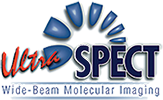As reported in JAMA:
This study compares actual myocardial perfusion imaging practice and radiation doses in US and non-US laboratories and identifies opportunities to improve radiation doses in the United States.
Myocardial perfusion imaging (MPI) is integral to the diagnosis and management of known or suspected coronary artery disease and is therefore performed on millions of US patients each year. However, the associated exposure to ionizing radiation has raised concerns about potential radiation-related health effects. The recent cross-sectional study of MPI practice conducted by the International Atomic Energy Agency (IAEA) demonstrated significant variations in radiation doses, and in the use of best practices that can help to reduce dose, among laboratories worldwide. Although survey data have described self-reported US use of different MPI protocols and some dose-reduction methods, no previous study, to our knowledge, has characterized actual US MPI radiation doses as well as use of best practices. We compared actual MPI practice and radiation doses in US and non-US laboratories and identified opportunities to improve radiation doses in the United States.

